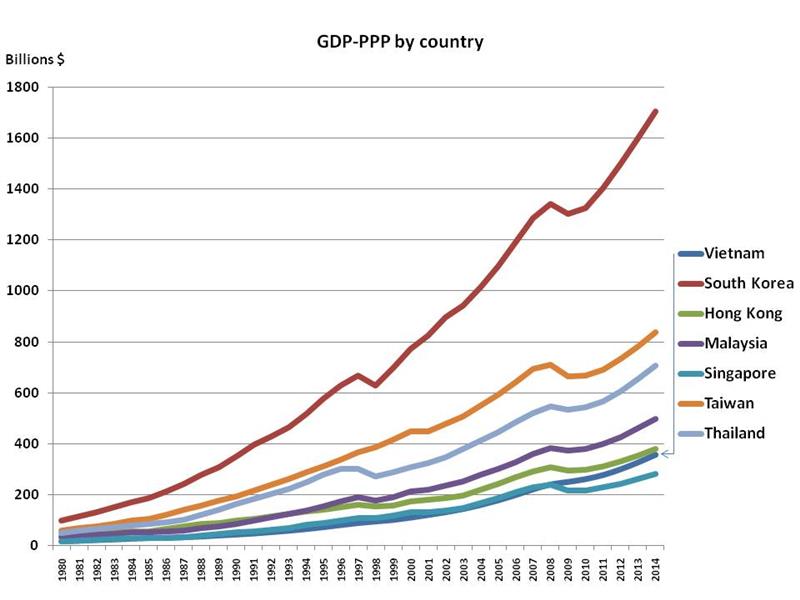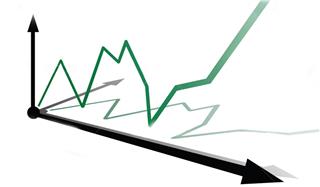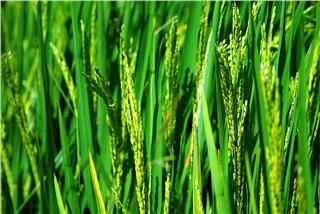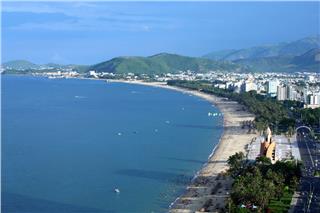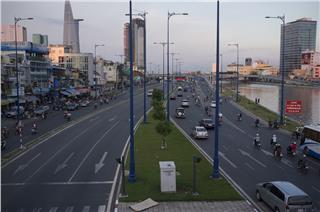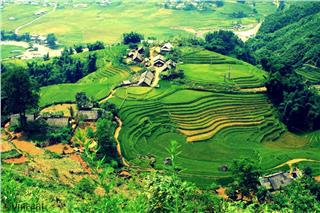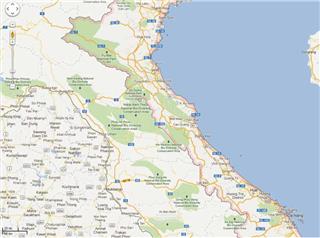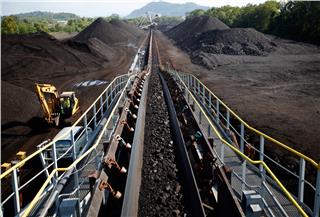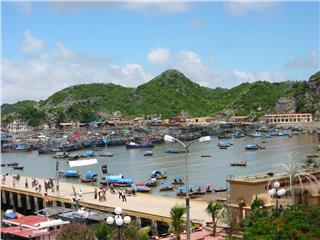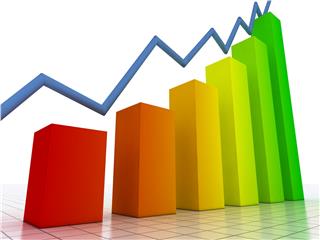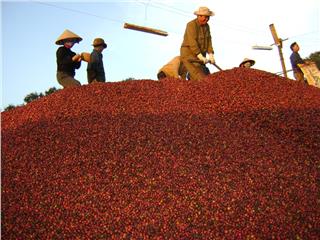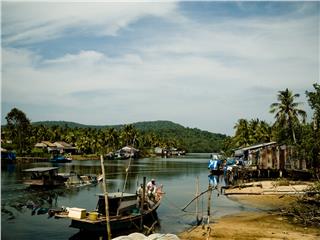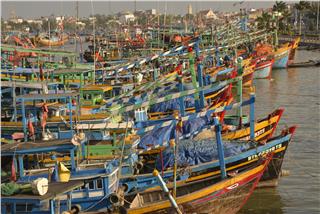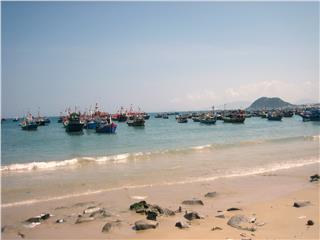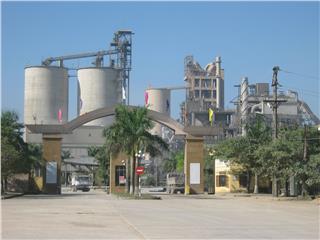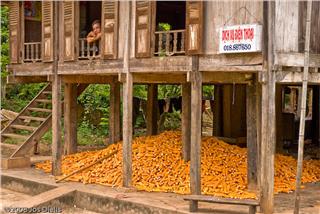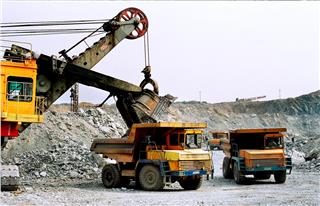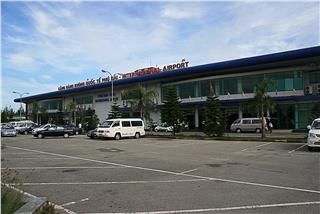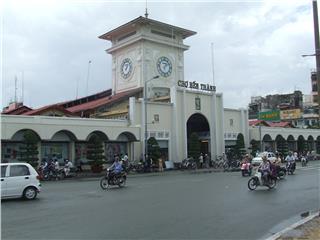Vietnam economy is a market economy which depends much on exports, and projects on FDI. The economy ranks sixth in Southeast Asia, and fifty-seventh in the global market. Vietnam is one of developing countries with fast growth rate, about 7% per year.
As being a market economy, highly dependent on crude exports and foreign direct investment (FDI), Vietnam is the 6th largest economy in Southeast Asia and the 57th one in the world, in terms of nominal gross domestic product in 2011. In terms of nominal gross domestic product per capita, Vietnam economy ranks 128th. The Communist Party of Vietnam has intention to build a market economy system in the country. As of November 2007, Vietnam was recognized as a full market economy by China, Russia, Venezuela, South Africa, ASEAN and Ukraine. Since 1976, because there is one party leadership, the ups and downs of Vietnam economy depends much on the leaders and policies which are given by the Communist Party and the government. According to PwC’s forecast in early 2008, economy of Vietnam could become the 28th largest economy in the world with the Purchasing Power Parity (PPP) reaching over US$850 billion in 2025. By 2050, Vietnam economy will stand in the top 20 largest economies in the world, having the highest growth rates among the newly emerging economies, and reaching 70% of the UK economy. However, Vietnam economic growth rate slowed in the second phase after 1997 (in 1998 rose only 5.76 % and 4.77 % in 1999), and from 2008, especially since 2011 increased by 6, 24 %, 5.25 in 2012. These figures are less than that in five other Southeast Asian region countries, and lower than the average figure of South East Asia - Pacific (according to World Bank in 2013, Vietnam increased by 5.3 %, while the region rises 7.2 %).
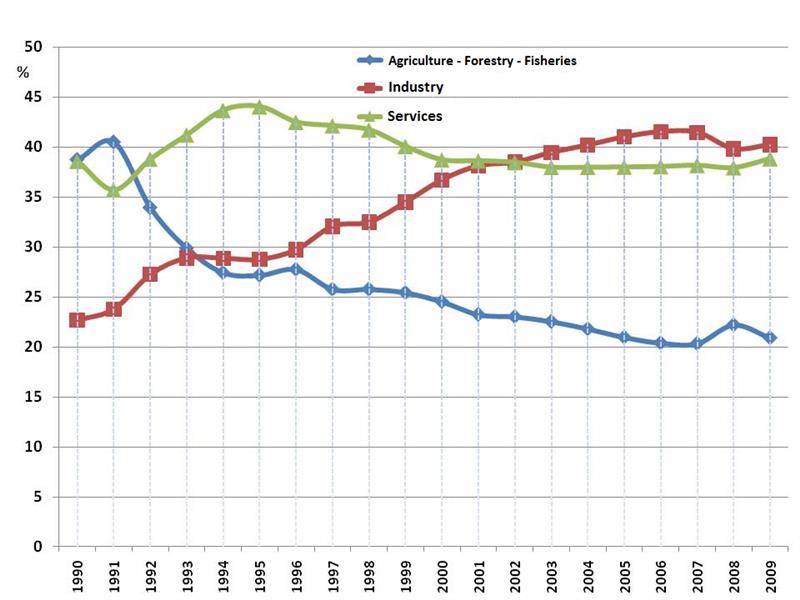
Economy in Vietnam underwent five periods: before 1954, 1954 – 1975, 1976 – 1986, 1986 – 2006, and 2006 – 2012. Vietnam economic in French colonial period was the most prosperous in 1938, 60% higher than that in 1960. In 1938, the GDP of Indochina was of 1,014 billion of Indochina currency, in which industry accounted for 22%. In the second period, Vietnam economic development of the Democratic Republic of Vietnam increased 6% per year (average GDP per capita rose by about 3%), while the Republic of Vietnam economy had an average growth rate of 3.9% (GDP per capita in the increase of 0.8%). Specifically, in 1965-75 period, the economy of the Republic of Vietnam developed in negative trend, mainly due to the widespread warfare in the region. In the third period, the economic mainstream of Vietnam during this period was the socialist industrialization, constructing the socialist collective mode of working people. This period is referred to the term “subsidy”. The economy operated under the centralized planning. The State planned all economic activities, enterprises operating under the state’s plans. Private sector was gradually removed. In 1986, an Economic Reform was launched by the government. This reform contributed to the changes in economic management. In the next period, Vietnam entered its transitional economy, from a central planned economy to market mechanism, but still limited with the phrase “market economy under the State’s management”. The 1990s and early 2000s were periods when Vietnamese economy positively integrated in the global economy, especially participating in the World Trade Organization (WTO) in 2006, and singing the US – Vietnam Bilateral Trade Agreement in 2001.
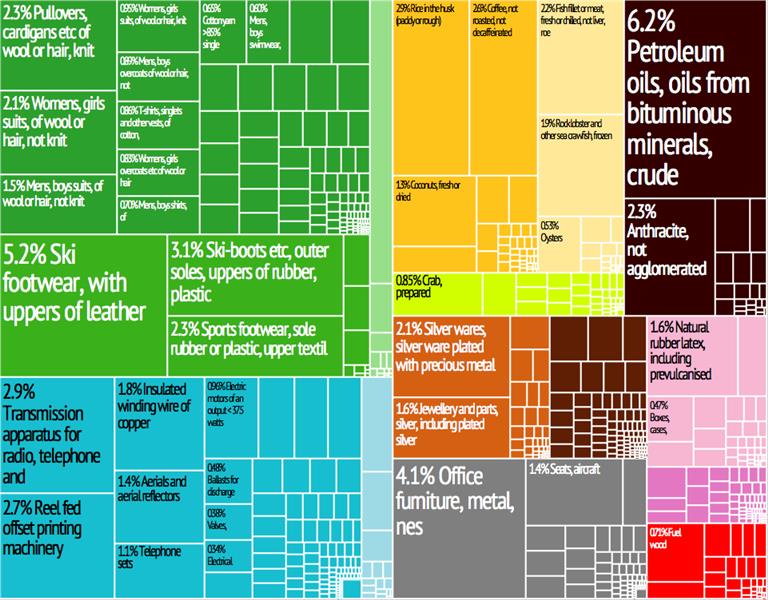
Vietnam owns a mixed economy, but the state intervention in the economy is still at a high level. Currently, the State of Vietnam has been applying measures of administrative price control by requiring economic groups and corporations to adjust levels of investment, gasoline price, and prices of steel, cement, and coal. Vietnam economic system consists of state economy, collective economy, private economy (individual, smallholder, and private capital), state capitalist economy, and foreign investment economy. According to preliminary data of the General Statistics Office in 2007, the state economy was the largest part accounting for 36.43% of Vietnam GDP, followed by the individual economy with 29, 61%, foreign investment economy with 17.66%, and private economy with 10.11%. Vietnam economic sectors include Agriculture, forestry and fisheries; Industry (mining and exploiting mineral, processing, constructing and producing building materials, manufacturing and distributing gas, electricity, and water); Commerce, services, finance, tourism, culture, education, and health. The main products of Agriculture are rice, coffee, rubber, tea, pepper, soybeans, sugar, bananas, peanuts, and seafood. Those of Industry are food processing, textiles, footwear, machinery, mining, construction industry, and electricity production. In industry of Services, the major products are tourism, restaurants, hotels, education, health care, and entertainment, etc.
In the GDP of Vietnam estimated in 2012, agriculture accounted for 21.5%, while industry made up 40.7%, and services acquired 37.7%. There are seven economic regions in Vietnam, including Northwest, Northeast, Red River Delta, North Central Coast, South Central Coast and Highlands, Southeast, and Mekong Delta. Besides, in three parts of the country, there are four key economic regions seen as motivations for the economic development of the country and region. In coastal area, there are 20 economic zones with incentives to attract domestic and foreign investments. Along the borders with China, Laos, and Cambodia, there are more than 30 border economic zones, including nine key border-gate economic zones (Mong Cai, Lang Son – Dong Dang, Lao Cai, Cau Treo, Lao Bao, Bo Y, Moc Bai, An Giang, and Dong Thap). Economic development of Vietnam is uneven between regions, and between urban and rural areas.
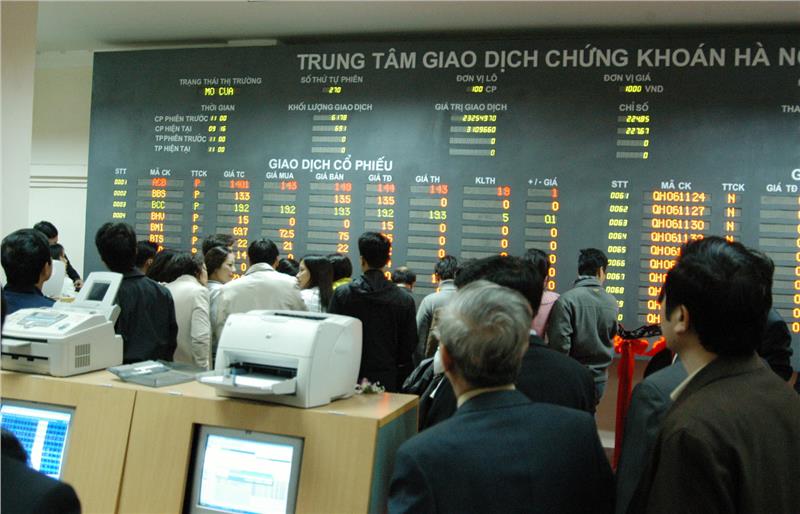
In terms of macro economy and finance, Vietnam now has two stock exchanges, one in Hanoi and another in Ho Chi Minh City. At HOSE, there are 173 listed stocks with VN-Index used. There are also 68 bonds and 4 fund certificates. Foreigners are allowed to buy or sell securities in Vietnam. So far, 2006 is the most exciting year of Vietnam stock market. Vietnam has 43 domestic commercial banks and 4 branches of foreign banks. The State Bank of Vietnam is the central bank of Vietnam having offices in all provinces and cities. In term of economic integration, Vietnam became member of world trade organizations: WTO, ASEAN, APEC, AFTA, and FAO. Vietnam has announced the establishment of strategic partnerships with Russia (2001), Japan (2006), India (2007), China (2008), South Korea, Spain (2009), United Kingdom (2010), Germany (2011), France and Italy (2013). Of these, some relationships with Germany, China and Russia have been raised to “comprehensive strategic partnership”. Since 2009, Vietnam has established “comprehensive partnership” relation with Australia.
